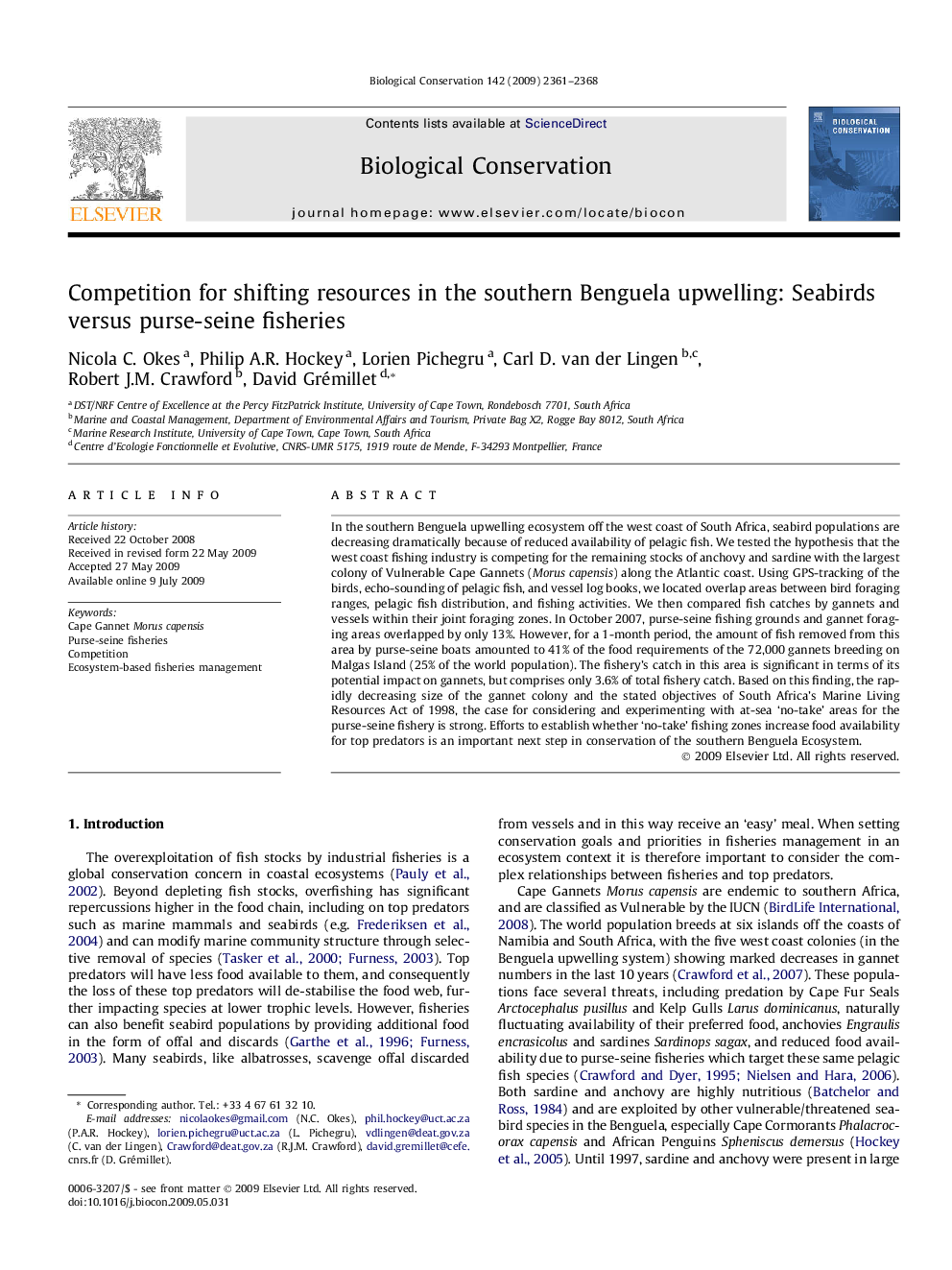| Article ID | Journal | Published Year | Pages | File Type |
|---|---|---|---|---|
| 4386232 | Biological Conservation | 2009 | 8 Pages |
In the southern Benguela upwelling ecosystem off the west coast of South Africa, seabird populations are decreasing dramatically because of reduced availability of pelagic fish. We tested the hypothesis that the west coast fishing industry is competing for the remaining stocks of anchovy and sardine with the largest colony of Vulnerable Cape Gannets (Morus capensis) along the Atlantic coast. Using GPS-tracking of the birds, echo-sounding of pelagic fish, and vessel log books, we located overlap areas between bird foraging ranges, pelagic fish distribution, and fishing activities. We then compared fish catches by gannets and vessels within their joint foraging zones. In October 2007, purse-seine fishing grounds and gannet foraging areas overlapped by only 13%. However, for a 1-month period, the amount of fish removed from this area by purse-seine boats amounted to 41% of the food requirements of the 72,000 gannets breeding on Malgas Island (25% of the world population). The fishery’s catch in this area is significant in terms of its potential impact on gannets, but comprises only 3.6% of total fishery catch. Based on this finding, the rapidly decreasing size of the gannet colony and the stated objectives of South Africa’s Marine Living Resources Act of 1998, the case for considering and experimenting with at-sea ‘no-take’ areas for the purse-seine fishery is strong. Efforts to establish whether ‘no-take’ fishing zones increase food availability for top predators is an important next step in conservation of the southern Benguela Ecosystem.
